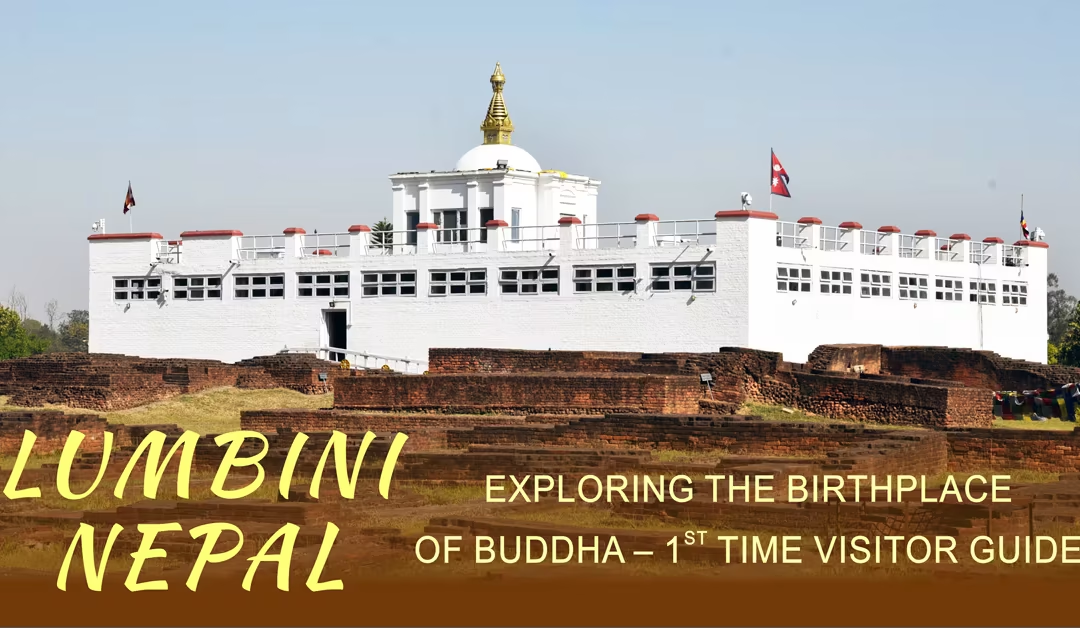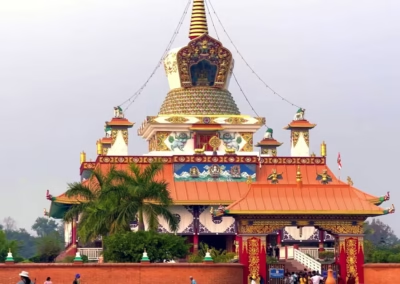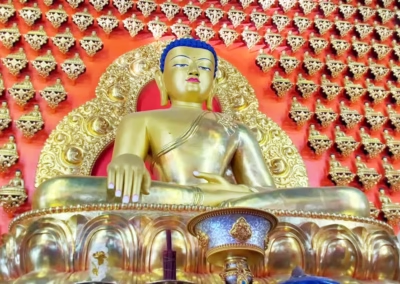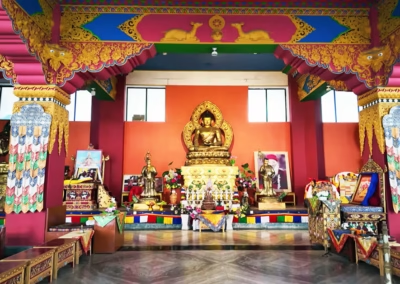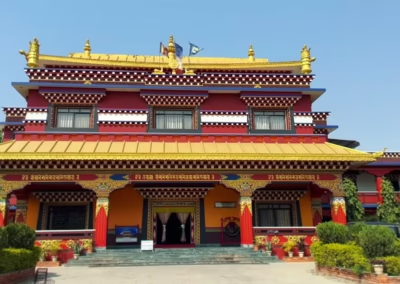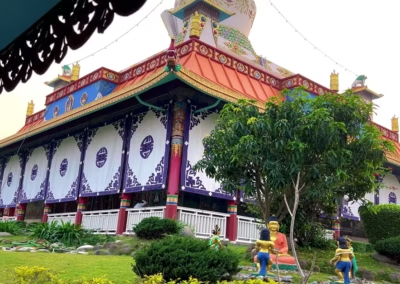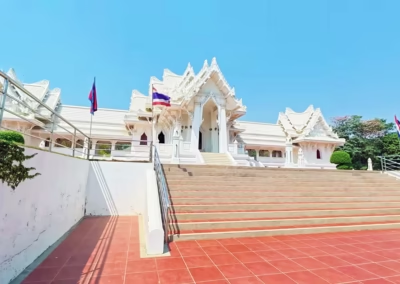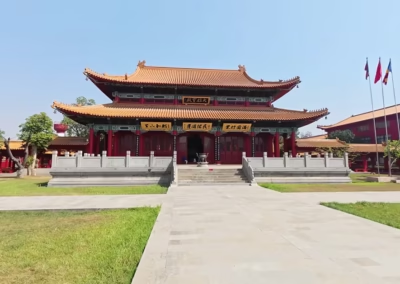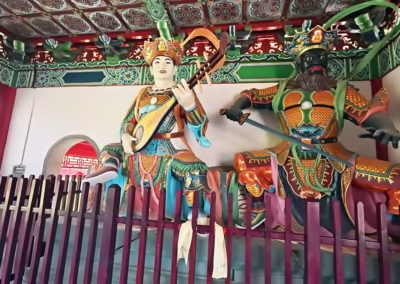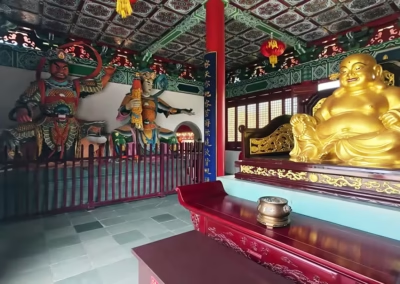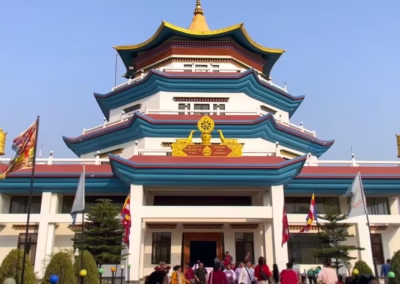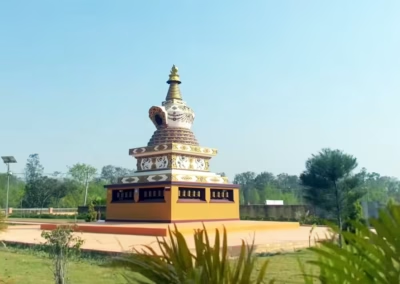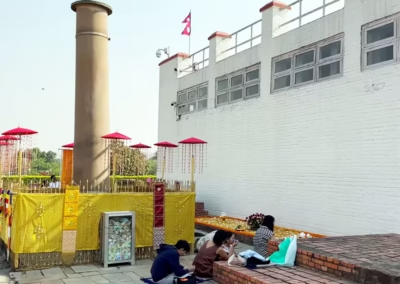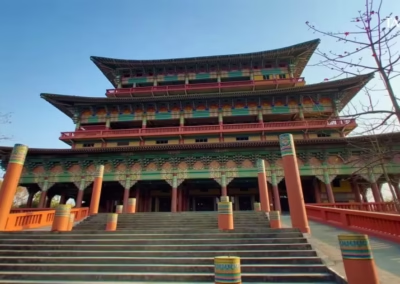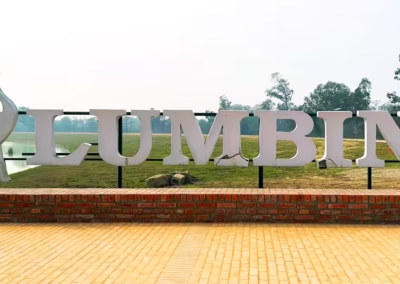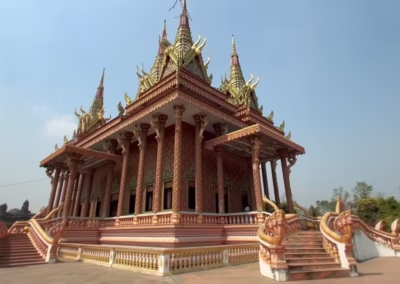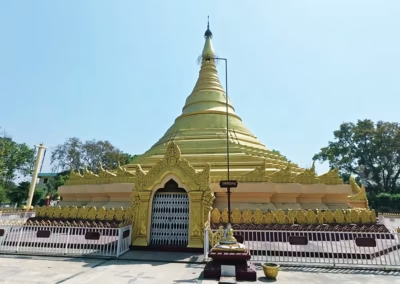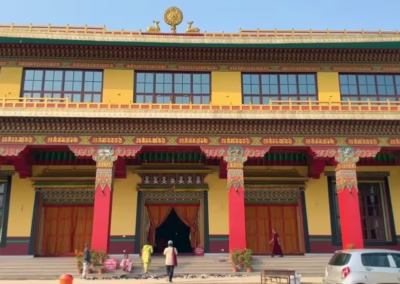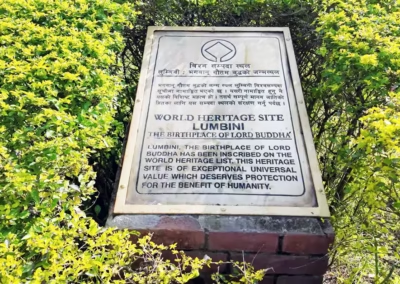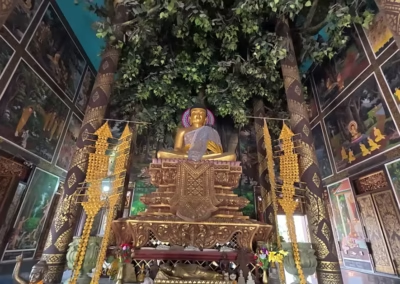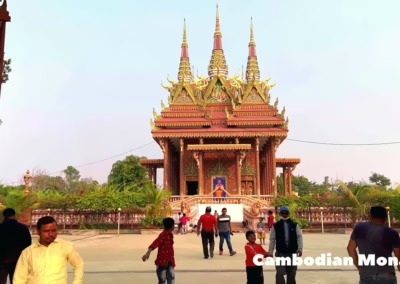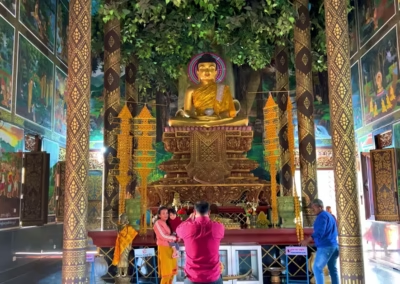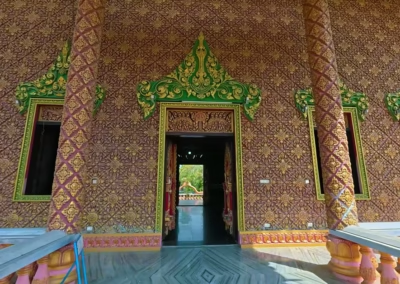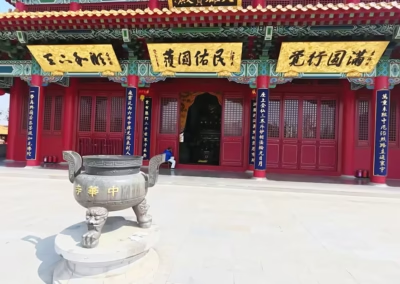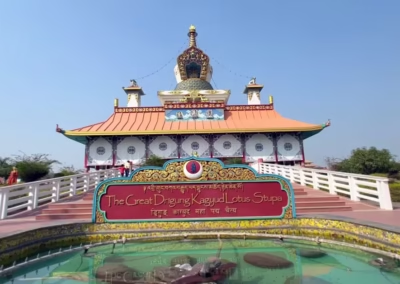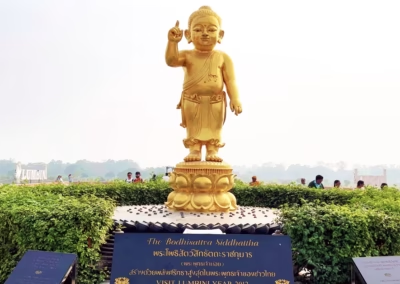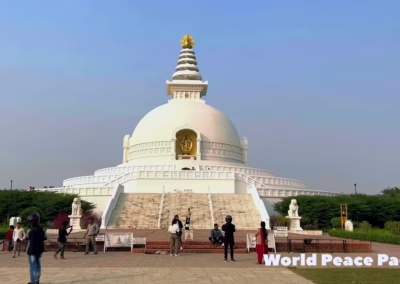Table of Contents
- 1 Exploring the Birthplace Of Buddha
- 2 Maya Devi Temple & Archaeology Discoveries
- 3 Lumbini Monastic Zone & International Temples
- 4 World Peace Pagoda & Ecotourism-Lumbini Nepal
- 5 Global Significance of Lumbini Nepal
- 6 Pilgrimage Trips: Tilaurakot & Surrounding Sites
- 7 Lumbini Eco Tourism & Getting Around Sustainable
- 8 Spiritual Retreat in Lumbini: Meditation & Village Tours
- 9 📅 3-day Spiritual Retreat Itinerary
- 10 🏨 Accommodation at Lumbini Nepal
- 11 🛌 Lumbini Nepal Guesthouse & Hotel Comparison Table
- 12 Practical Travel Tips for Lumbini Nepal
- 13 ✅ Quick Recap: Lumbini Travel Tips Checklist
- 14 📚 Cultural & Archaeological Value
- 15 ✅ Conclusion: Why Lumbini Nepal Matters
- 16 📚 References: Lumbini Nepal
- 17 Lumbini Nepal in Pictures
Exploring the Birthplace Of Buddha
Lumbini Nepal, revered as the birthplace of Lord Buddha (Siddhartha Gautama) around 623 BCE, holds profound spiritual and historical significance in the Buddhist world. Despite its ancient legacy, the sacred site’s exact location remained uncertain for centuries until its rediscovery in 1896 by German archaeologist Alois Anton Führer. During an expedition in the Rupandehi District of southern Nepal, Führer identified the Ashoka Pillar—an inscribed sandstone column erected by the Mauryan emperor Ashoka in the 3rd century BCE. The pillar’s Brahmi inscription verified that Emperor Ashoka had visited the site and paid homage to the birthplace of the Buddha, thus authenticating Lumbini’s historical and religious identity.
Recognizing its unparalleled importance, UNESCO inscribed Lumbini as a World Heritage Site in 1997. This designation acknowledged not only its religious value but also its archaeological richness and cultural legacy. To protect and develop the site in a sustainable and organized manner, a visionary Lumbini Master Plan was commissioned and designed by the renowned Japanese architect Kenzō Tange.
The Master Plan spans a carefully structured area of 4.8 kilometers by 1.6 kilometers, divided into distinct zones:
The Sacred Garden, which houses the exact spot of Buddha’s birth marked by the Maya Devi Temple and Ashoka Pillar.
The Monastic Zone, subdivided into two sectors—the Eastern Zone, representing Theravāda Buddhism, and the Western Zone, representing Mahayāna and Vajrayāna traditions.
A Cultural Center and buffer zone, designed for research, education, and support facilities.
A notable architectural element of the plan is a serene canal that runs through the central axis of the site. It is adorned with elegant brick-arched bridges that connect the various zones, enhancing the aesthetic and spiritual atmosphere. At the northern end of the canal, visitors can enjoy peaceful boat rides, offering a tranquil way to absorb the beauty and symbolism of the sacred landscape.
Today, Lumbini Nepal stands not only as a UNESCO World Heritage pilgrimage destination but also as a living symbol of peace, global unity, and spiritual heritage. Its structured layout and ongoing conservation efforts reflect an extraordinary blend of ancient devotion and modern vision, inviting millions of pilgrims, scholars, and tourists each year.
Maya Devi Temple & Archaeology Discoveries
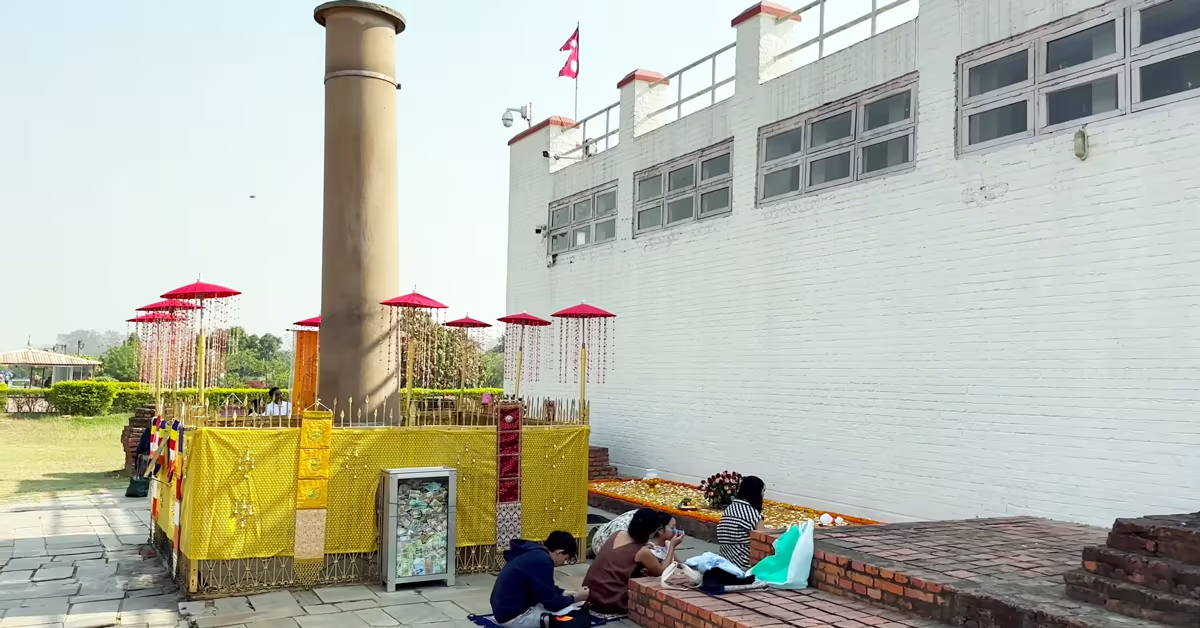
The Maya Devi Temple, situated in the heart of Lumbini Nepal, is the most sacred and archaeologically significant site for Buddhists worldwide. Regarded as the exact location where Queen Maya Devi gave birth to Siddhartha Gautama (the Buddha), this ancient temple has become the spiritual nucleus of the Lumbini Sacred Garden.
Originally constructed during the 3rd century BCE, likely under the patronage of Emperor Ashoka, the temple was built atop a series of much older religious and cultural structures. These include wooden postholes, brick foundations, and shrine platforms dating back to the 6th century BCE, preserved beneath the current structure. The presence of such early artifacts points to continuous religious reverence at this location for over 2,500 years.
One of the most significant elements inside the temple is the marker stone, which is believed to pinpoint the exact birth spot of the Buddha. Alongside this sacred stone is a nativity bas-relief sculpture, depicting Queen Maya holding a branch of the sal tree during childbirth—a classic iconographic representation in Buddhist art. Adjacent to the temple lies the Pushkarini sacred pond, where Queen Maya is said to have bathed before giving birth and where the newborn Siddhartha was ceremonially washed.
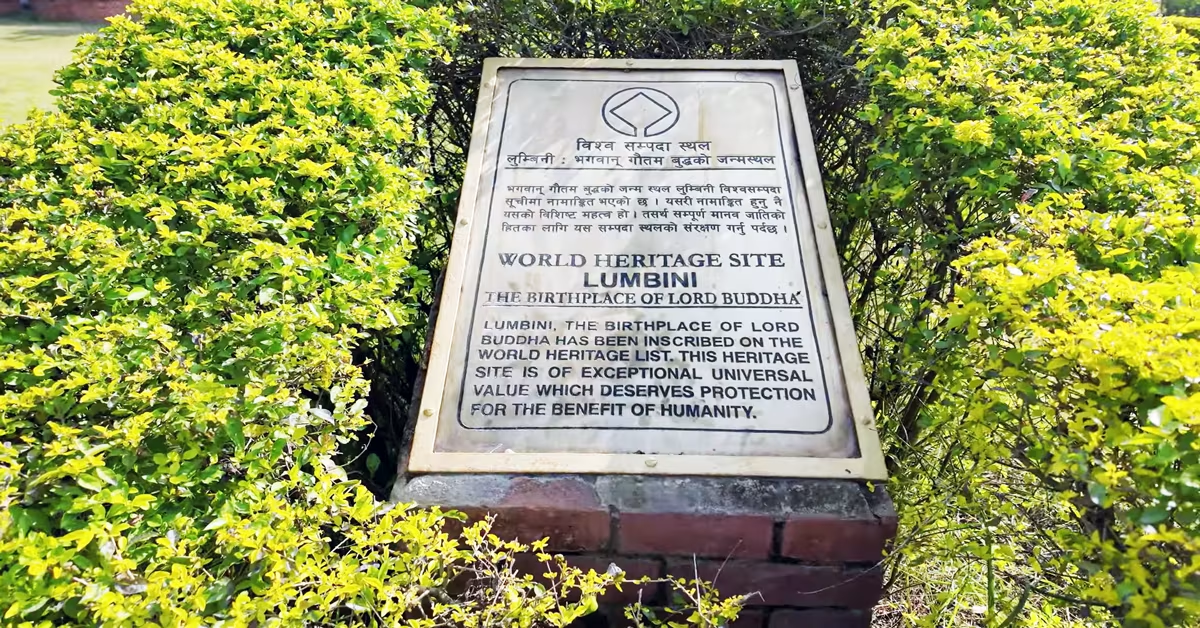
Starting in 2010, an extensive series of archaeological excavations were undertaken by UNESCO in collaboration with Durham University (UK) and other international partners. These high-tech, multidisciplinary investigations led to groundbreaking discoveries beneath the temple, including village layers dating back to approximately 1300 BCE. These findings not only predate the Buddha’s lifetime by centuries but also provide insight into the early settlement patterns of the Lumbini region.
What makes these discoveries extraordinary is the identification of what is now considered the oldest Buddhist shrine in South Asia. This wooden structure, uncovered beneath later brick temples, suggests a continuous line of sacred worship stretching back well before the Mauryan period. The use of radiocarbon dating, ground-penetrating radar, and geoarchaeological analysis has further validated these findings, elevating the temple’s global historical and spiritual significance.
In summary, the Maya Devi Temple excavation in Lumbini has not only preserved a living link to the Buddha’s nativity but has also redefined our understanding of early Buddhist architecture and religious practice. As such, it remains a central destination for scholars, pilgrims, and tourists exploring the origins of Buddhism and the evolution of sacred architecture in South Asia.
Lumbini Monastic Zone & International Temples
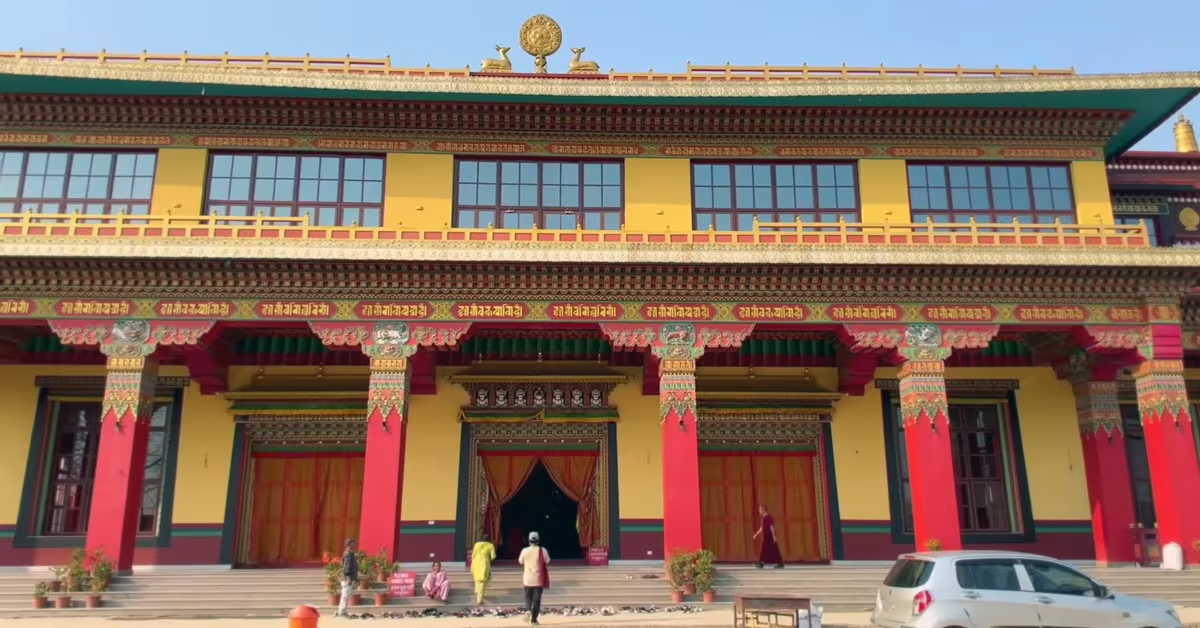
The Lumbini Nepal Monastic Zone is a uniquely designed sacred space that serves as a living museum of global Buddhist architecture, spiritual tradition, and cultural unity. Spanning across a vast stretch of the Lumbini Master Plan, this zone is divided into two major sectors—the Eastern Zone and the Western Zone—each symbolizing distinct schools of Buddhist thought and practice.
Eastern Monastic Zone – The Heart of Theravāda Buddhism
The Eastern Zone is home to monasteries following the Theravāda tradition, the oldest school of Buddhism practiced predominantly in Thailand, Myanmar, and Sri Lanka. Here, you’ll find:
- The Royal Thai Monastery: A striking white-marble temple reflecting traditional Thai architecture, known for its serene meditation halls and ornate rooftop carvings.
- The Myanmar Golden Temple: Dazzling with golden stupas and intricate wooden details, this temple mirrors Burmese spiritual heritage.
- The Sri Lankan Monastery: Offering authentic Buddhist rituals, chanting, and peaceful surroundings modeled after the ancient Anuradhapura style.
These temples are not only architectural masterpieces but also active centers for Vipassana meditation retreats, chanting ceremonies, and Dhamma talks, welcoming both monks and lay devotees from around the world.
Western Monastic Zone – The Realm of Mahāyāna & Vajrayāna Traditions
On the opposite side lies the Western Zone, dedicated to the Mahayāna and Vajrayāna schools, which are practiced in countries such as China, Korea, France, Tibet, Germany, and Vietnam. Key highlights include:
- The Chinese Monastery: A majestic temple adorned with red pillars and golden roofs, reflecting Chinese Buddhist aesthetics.
- The South Korean Dae Sung Shakya Temple: Built in traditional Korean style, this temple often hosts cultural performances and meditation workshops.
- The Tibetan Monasteries: Featuring prayer flags, large stupas, and rotating prayer wheels, these monasteries offer a deep insight into Vajrayāna rituals and iconography.
- The German and Austrian Temples: Combining European precision with Buddhist philosophy, these temples symbolize the global reach of Buddhist compassion.
A Living Tapestry of Faith and Culture
What makes the Lumbini Monastic Zone truly exceptional is its commitment to representing global Buddhist harmony in one physical space. Each monastery is funded, designed, and managed by a different country or sect, yet all coexist peacefully—showcasing the unity in diversity that lies at the core of Buddhist teachings.
These international temples serve as spiritual retreats, cultural learning centers, and community hubs, offering visitors:
- Daily meditation sessions led by resident monks
- Dhamma teachings in various languages
- Cultural performances and festivals that celebrate regional Buddhist traditions
- Pilgrim accommodations, libraries, and peaceful gardens for self-reflection
Whether you’re a devoted practitioner, a spiritual seeker, or a cultural explorer, the Monastic Zone provides an enriching and immersive experience into the world of Buddhism without leaving Nepal.
In conclusion, the Lumbini Monastic Zone guide reveals a powerful narrative of religious peace, international cooperation, and spiritual sanctuary. It is a must-visit for anyone seeking to understand how Buddhism has evolved and flourished across borders, while still remaining rooted in the sacred soil of Lumbini—the birthplace of the Buddha.
World Peace Pagoda & Ecotourism-Lumbini Nepal
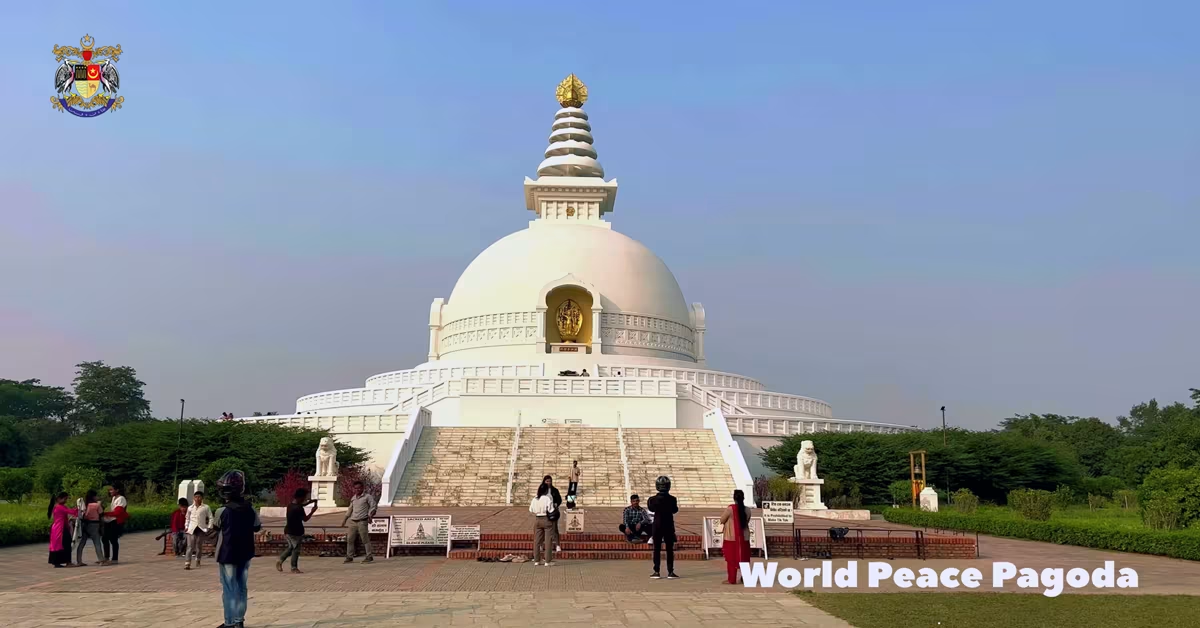
Located at the northernmost point of the Lumbini Master Plan, the majestic Lumbini Peace Pagoda—also known as the Nipponzan Myohoji Peace Stupa—stands as a beacon of world peace, spiritual unity, and environmental conservation. Constructed by the Japanese Buddhist order Nipponzan Myohoji, this striking white stupa was completed at a cost of approximately USD 1 million, generously funded by Japanese Buddhist communities dedicated to spreading messages of non-violence and compassion.
Architecture & Spiritual Symbolism
This brilliant white structure rises in three elegant tiers, symbolizing the ascent toward enlightenment. The pagoda is adorned with four golden statues of the Buddha, each facing a cardinal direction. These statues represent key moments in the Buddha’s life: birth, enlightenment, teaching, and death (Mahaparinirvana). The stupa itself radiates tranquility and purity, reflecting the peaceful essence of the Buddha’s teachings.
Visitors often ascend the stupa’s stairs to its upper levels, where they are rewarded with a breathtaking panoramic view of the Lumbini Sacred Garden, the canal, monastic zones, and the surrounding plains of the Rupandehi District. The serene atmosphere and lush surroundings make it an ideal spot for meditation, quiet reflection, and spiritual rejuvenation.
Lumbini Crane Sanctuary: A Haven for Biodiversity
One of the unique aspects of the Peace Pagoda in Lumbini Nepal is its location adjacent to the Lumbini Crane Sanctuary—a protected natural reserve established to safeguard the habitat of the endangered Sarus crane, the world’s tallest flying bird. These elegant, red-headed cranes are revered in South Asian culture and have become symbolic of peace and harmony.
Spanning across wetlands and green pastures, the sanctuary not only provides a safe haven for these birds but also supports a variety of other migratory species, making it a key destination for birdwatchers, wildlife photographers, and eco-tourists. It highlights how spiritual heritage and environmental stewardship can coexist harmoniously.
Global Significance of Lumbini Nepal
The Lumbini Nepal Peace Pagoda Nepal is one of over 80 such stupas constructed worldwide by the Nipponzan Myohoji order, each dedicated to promoting peace and disarmament through the teachings of the Buddha. This particular stupa is especially significant due to its placement in Lumbini—the birthplace of the Buddha—making it a globally recognized symbol of interfaith solidarity and non-violence.
Visitor Experience at Lumbini Nepal
- 📍 Location: Northern end of the Lumbini Master Plan
- 🕒 Best Time to Visit: Early morning or sunset for peaceful views and birdwatching
- 🧘♀️ Activities: Meditation, walking tours, photography, and nature observation
- 🚶 Accessibility: Reachable via eco-friendly canal boat rides, electric rickshaws, or a scenic walk from the Sacred Garden
In summary, the Nipponzan Myohoji Peace Pagoda in Lumbini is more than just an architectural marvel—it’s a spiritual lighthouse and an ecological sanctuary, combining sacred symbolism with a message of global peace and sustainable coexistence. Whether you’re a pilgrim, a peace activist, or a nature enthusiast, the Peace Pagoda offers a deeply enriching experience that embodies the true essence of Buddha’s teachings in action.
Pilgrimage Trips: Tilaurakot & Surrounding Sites
Tilaurakot – Ancient Kapilvastu
Located ~27 km west of Lumbini, this site—once the capital of the Shakya kingdom—shows palatial ruins, fortifications, moats, gates, and residential zones from ~1000 BCE to 300 CE. Archaeological excavation confirmed urban occupation in five phases, including Grey Ware and Northern Black Polished Ware cultures. A visitor museum offers artifacts and contextual info.
Getting there: ~45 min by taxi or rickshaw; public buses also available (~NPR 150). Local services offer day-trip packages ~USD 65, covering transport, guide, and parking.
Kudan, Gotihawa, Niglihawa
Kudan: Tourist locales recall Buddha receiving yellow robe and meeting family post-enlightenment (~4.5 km SW of Tilaurakot).
Gotihawa: Revered birthplace of Krakuchanda Buddha; site includes brick stupa and remains of an Ashokan pillar (~5 km from Tilaurakot).
Niglihawa: Birthplace of Kanakamuni Buddha; houses a broken Ashokan pillar (~7 km north of Taulihawa).
Devdaha, Sagarhawa & Aroarakot
Devdaha: Queen Maya and Yasodharā’s home, capital of the Koliya kingdom (~35 km NE of Lumbini).
Sagarhawa: Recalling the Shakya massacre, with pond and stupas commemorating victims (~12 km north of Taulihawa).
Aroarakot: Ruined rectangular fort ~10 km NW of Taulihawa, identified via archaeologist Mukharji.
Ramagrama Stupa
Only undisturbed original stupa containing Buddha’s relics. Built during Mauryan/Gupta eras, Ramagrama is about 40 km north of Lumbini in Parasi District. It’s a significant — albeit less-visited — relic site on the pilgrimage map.
Lumbini Buddhist Circuit
Many tour companies bundle these sites into a Buddhist pilgrimage circuit, covering Kudan, Gotihawa, Niglihawa, Tilaurakot, Devdaha, Sagarhawa, and Ramagrama over multiple days. Perfect for history lovers and spiritual seekers alike.
Lumbini Eco Tourism & Getting Around Sustainable
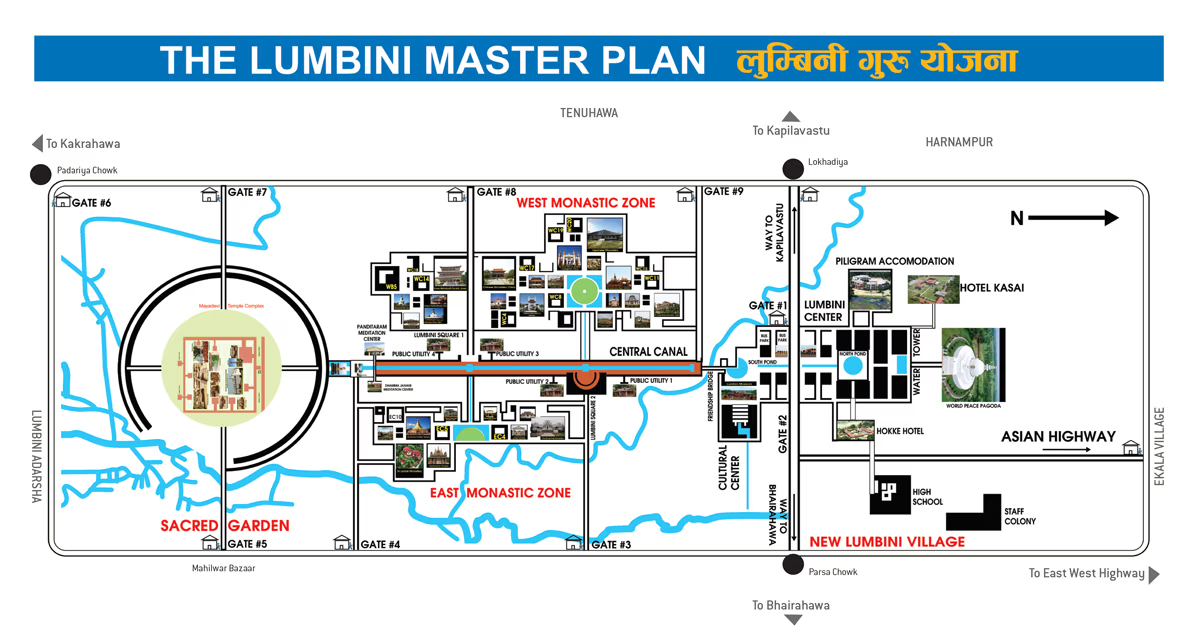
One of the most forward-thinking aspects of the Lumbini Master Plan is its commitment to eco-friendly tourism. As the sacred birthplace of Lord Buddha—a global symbol of compassion and harmony—Lumbini has embraced sustainable practices that aim to preserve its sanctity, protect its natural environment, and offer visitors a serene and pollution-free pilgrimage experience.
Eco-Friendly Travel Inside Lumbini Nepal
To maintain the peaceful ambiance and reduce environmental impact, the use of private motor vehicles is strictly prohibited within the core area of the Lumbini Development Zone. Instead, visitors are encouraged to explore the vast site using environmentally friendly transport options, including:
Electric Rickshaws (E-Rickshaws): These are the most popular and affordable way to get around inside the Lumbini complex. Typically available near Gate 2, they cost around NPR 600 (approx. USD 4.50) for a guided 3-hour ride. Many drivers offer custom temple circuits and brief narrations about the monasteries, making it both educational and convenient.
Green Shuttle Buses: As part of a phased eco-transport initiative, Lumbini is introducing solar-powered and electric buses to reduce emissions. These are expected to connect major points within the Sacred Garden, Monastic Zones, and the Cultural Center in the near future, offering smooth and accessible transit for pilgrims of all ages.
Canal Boat Rides: One of the most serene and visually enriching ways to travel in Lumbini is by taking a boat ride along the central canal. These boats glide past manicured gardens, artistic bridges, and spiritual landmarks, offering a meditative travel experience unlike any other.
Bicycles: Bicycles are available for rent near the entry gates and nearby hotels. Cycling through the monastic zones allows for a quiet, immersive exploration of the area and is perfect for eco-conscious travelers.
Walking Tours: With well-maintained paths and informative signposts, walking remains one of the best ways to absorb the spiritual and architectural richness of the Lumbini complex. Most routes are shaded and flat, making them accessible even for elderly visitors and families.
Transportation Beyond Lumbini
For those looking to explore attractions beyond the central Lumbini site—such as Tilaurakot (ancient Kapilavastu), Gotihawa (Kanakamuni Buddha site), Kudan (Nigrodharama), and Devdaha (maternal home of Queen Maya)—local travel options are both flexible and tourist-friendly.
Jeeps and Private Taxis: Day trips can be arranged through hotels or local tour operators. The cost generally ranges between USD 65 to 120 per day, depending on distance, vehicle type, and included services.
Bundled Tours: Many local agencies offer all-inclusive packages that include a professional guide, bottled water, snacks, fuel, and entrance permits. These are ideal for travelers who want a hassle-free and informative experience exploring the Greater Lumbini Buddhist Circuit.
Public Buses: Available for budget travelers, though less comfortable and less frequent. Routes typically connect Lumbini with Bhairahawa, Butwal, and nearby districts.
Why Eco-Tourism Matters in Lumbini Nepal?
Promoting eco-tourism in Lumbini is not just about convenience—it’s about aligning with the very philosophy of non-harm and simplicity that the Buddha preached. Sustainable transportation ensures:
🕊️ A pollution-free sacred space for meditation and reflection
🦢 Protection of the local biodiversity, especially in areas like the Lumbini Crane Sanctuary
👣 Minimal carbon footprint from tourism activities
💼 Job creation through eco-tourism enterprises like rickshaw driving, bicycle rental, and boat operation
As more travelers become eco-conscious, Lumbini sets a powerful example of how religious pilgrimage, cultural heritage, and environmental stewardship can seamlessly coexist.
Spiritual Retreat in Lumbini: Meditation & Village Tours
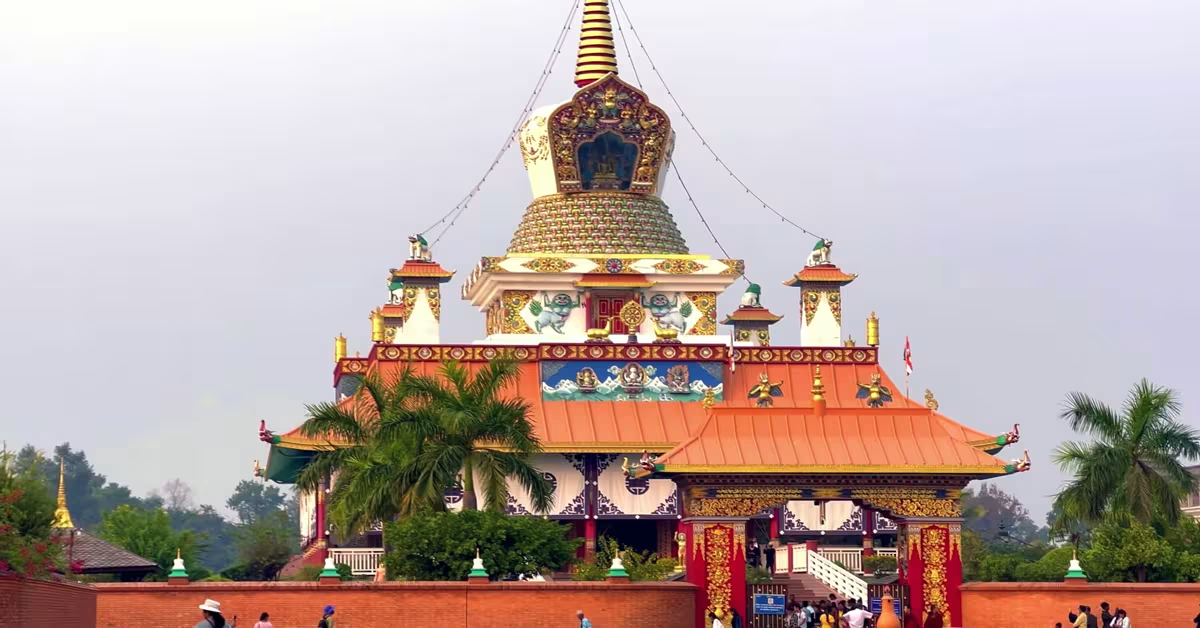
For those seeking more than sightseeing, Lumbini offers a deeply spiritual experience through guided meditation retreats, temple chanting sessions, and authentic village life encounters. As the birthplace of Siddhartha Gautama—the Buddha—Lumbini attracts not only pilgrims but also global seekers yearning for inner peace, mindfulness, and cultural connection.
🌄 Meditation for Mindfulness & Inner Peace
Many of the monasteries within the Lumbini Monastic Zone offer daily meditation programs, Vipassana retreats, and chanting sessions designed specifically for international pilgrims. You can choose between:
- Theravāda Monasteries (Eastern Zone): These temples—such as the Royal Thai Monastery and Sri Lankan Monastery—focus on traditional mindfulness practices (Vipassana), breath awareness, and Buddhist scripture recitations.
- Mahāyāna & Vajrayāna Monasteries (Western Zone): Monasteries from China, Korea, Vietnam, and Tibet offer mantra meditation, walking meditation, and group pujas (ceremonies), often in beautifully adorned halls filled with incense and symbolic art.
The most recommended times for meditation are early morning (before sunrise) and at sunset, when the energy in the sacred garden is serene and undisturbed. Many spiritual travelers gather around the Pushkarini Pond, just beside the Maya Devi Temple, where Queen Maya is believed to have bathed before the birth of Buddha. Locals and visitors alike describe the ambiance here as deeply tranquil and spiritually charged—ideal for quiet reflection or solo practice.
🏡 Immersive Village Tours Around Lumbini
For those interested in connecting with the daily lives and traditions of rural Nepalese communities, a short trip outside Lumbini can open the door to authentic cultural experiences.
Explore nearby villages like:
- Ekala: Known for its lush rice fields, this village provides insight into traditional Nepali farming practices, seasonal planting rituals, and sustainable living.
- Khudabagar: A serene rural setting where travelers can witness pottery-making, local weaving, and even learn a few Nepali phrases from friendly villagers.
- Madhuvani: Ideal for nature lovers and photographers, this village is surrounded by wetland ponds that attract a wide variety of birds, including herons, kingfishers, and migratory species—making it a birdwatcher’s paradise.
These village excursions offer more than just sightseeing. Many local women’s cooperatives and community-based tourism groups offer:
- 🛍️ Handicraft stalls selling handmade items like woven baskets, pottery, and traditional jewelry
- 🥘 Home-cooked meals where you can enjoy dal bhat (lentils and rice) with locally grown vegetables
- 🐦 Guided birdwatching tours near ponds and rice paddies
- 🎭 Cultural dance performances and storytelling evenings hosted by village elders
Participating in these activities not only supports local livelihoods but also allows travelers to experience the harmony between Buddhist values and rural life in Nepal.
Why Combine Meditation with Village Exploration?
Merging Lumbini pilgrimage meditation with village immersion enriches the overall spiritual journey by:
- Offering a holistic understanding of Buddhist simplicity and compassion in daily life
- Deepening your mindfulness practice through connection with people and nature
- Creating space for cross-cultural dialogue, empathy, and gratitude
- Supporting sustainable tourism and local economies
Pro Tips for Spiritual & Cultural Travelers
- ✔️ Check monastery schedules in advance (some require pre-registration for meditation retreats).
- ✔️ Dress modestly and speak softly in temple and village areas.
- ✔️ Bring binoculars and a journal for birdwatching and reflections.
- ✔️ Consider staying in a community homestay for deeper connection.
In summary, Lumbini pilgrimage meditation isn’t just about sitting in silence—it’s about engaging with the spirit of Buddhism through mindfulness, nature, and human connection. Whether you’re meditating beside the sacred pond or sharing a meal in a local home, each moment in Lumbini brings you closer to peace, simplicity, and meaning.
📅 3-day Spiritual Retreat Itinerary
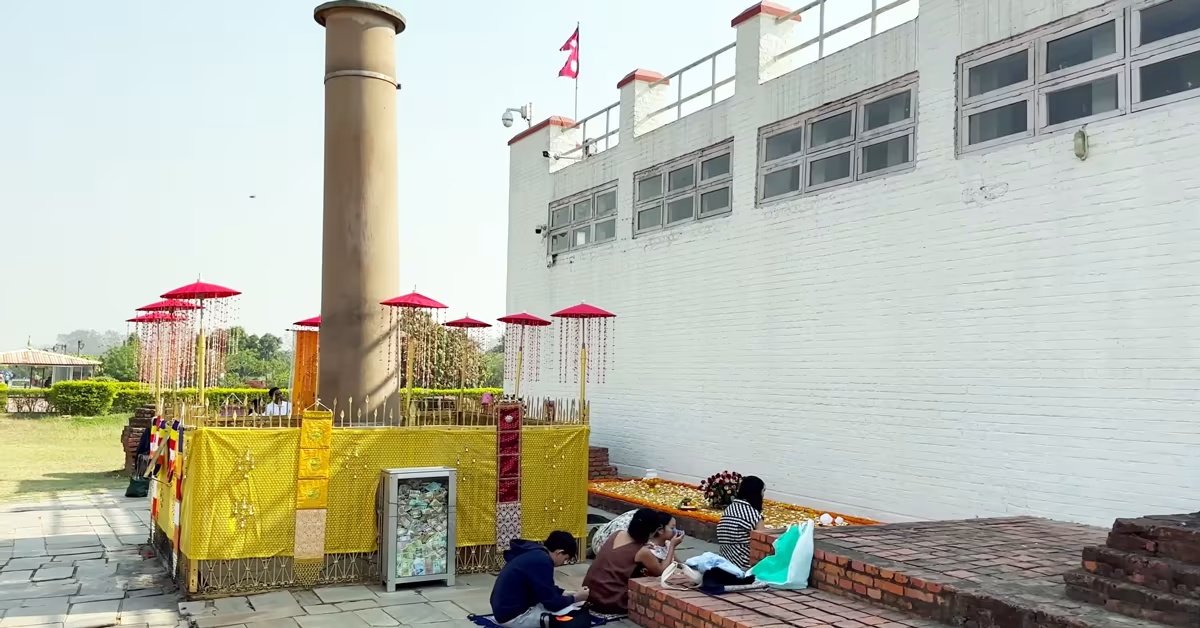
Day 1: Arrival & Inner Stillness at Sacred Garden
Focus: Orientation, Sacred Sites, Introductory Meditation
Theme: Connecting with the roots of Buddhism
Morning
- ✈️ Arrive at Gautam Buddha International Airport (GBIA) or via Bhairahawa road transfer
- 🏨 Check-in at a meditation-friendly hotel or monastery guesthouse (e.g., Lumbini Garden Lodge or Korean Temple lodging)
- 🥗 Light vegetarian lunch and rest
Afternoon
- 🛕 Visit Maya Devi Temple, Ashoka Pillar, and Pushkarini Pond
- 🧭 Join a guided heritage walk inside the Sacred Garden
- 📸 Quiet time for photography, journaling, and reflection
Evening
- 🧘♀️ Sunset meditation session near the Pushkarini pond
- 🪔 Attend chanting ceremony at Royal Thai or Sri Lankan Monastery
- 🍵 Herbal tea + early dinner at hotel
- 🛌 Silent night with optional self-guided mantra practice
Tip: Carry a notebook and set an intention for your spiritual journey.
Day 2: Deepening Meditation & Monastery Circuit
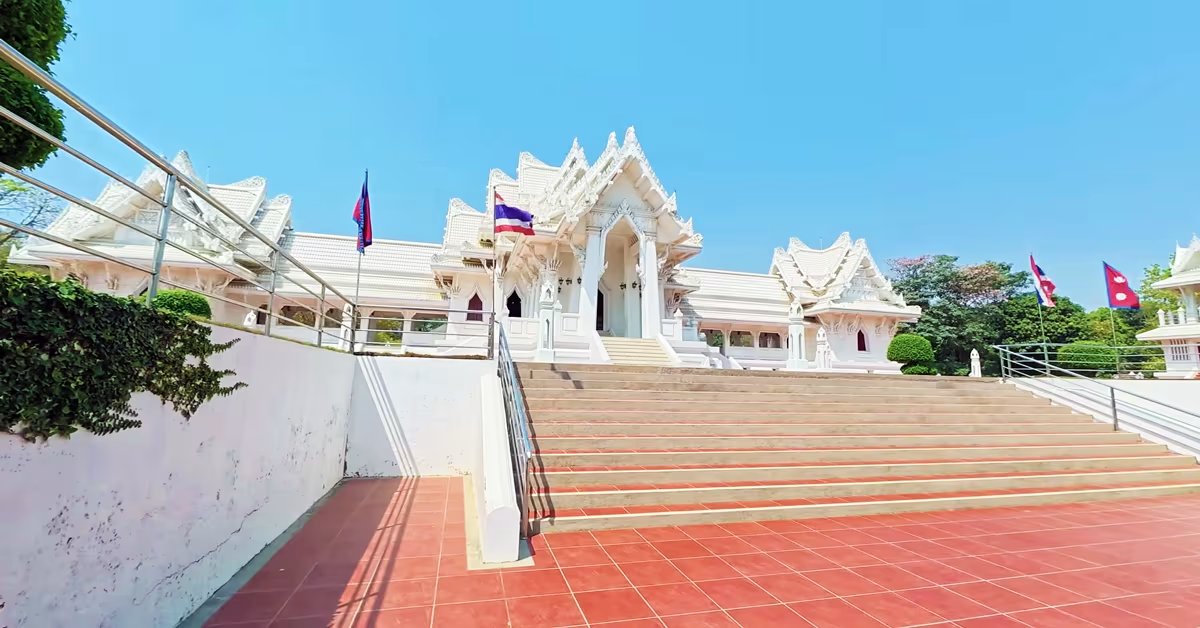
Theme: Walking the path of mindfulness
Morning
- 🌅 Wake early for dawn meditation at Panditarama Vipassana Center
- 🍚 Light breakfast (fruits, rice porridge)
- 🚲 Cycle or take eco-rickshaw to the East Monastic Zone
- 🛕 Visit:
- Royal Thai Monastery – architecture, mindfulness
- Myanmar Golden Temple – chanting with monks
- Sri Lankan Monastery – meditation garden
Afternoon
- 🍽 Vegetarian lunch at Peace Café or Korean Temple kitchen
- 🌿 Visit the West Monastic Zone:
- Korean Dae Sung Temple – Mahāyāna teachings
- German/Austrian Monasteries – stupa architecture
- Tibetan Temples – prayer wheels, Vajrayāna icons
- 🛶 Optional canal boat ride to the Peace Pagoda
Evening
- 🕊️ Silent walk & sunset meditation at the Nipponzan Peace Pagoda
- 🐦 Quick stop at Lumbini Crane Sanctuary (nearby)
- 🍜 Dinner and spiritual Q&A session at guesthouse or monastery
- 📿 Optional group chanting or personal mantra recitation
Tip: Wear white or light-colored clothing to blend with temple customs.
Day 3: Village Exploration & Nature Immersion
Theme: Harmony with nature and community
Morning
- 🚙 Depart for Ekala or Madhuvani Village (20–30 min by jeep or cycle)
- 🌾 Join locals in organic rice farming or morning rituals
- 🧺 Visit a women’s cooperative to see handicraft making
- 🐦 Birdwatching at village wetland ponds – Sarus cranes, kingfishers, etc.
Afternoon
- 🍛 Traditional home-cooked lunch with a host family
- 🎭 Enjoy a folk song, dance, or storytelling performance
- 📸 Capture village life for your travel journal or blog
Evening
- Return to Lumbini
- 🪷 Final sunset gratitude meditation at Pushkarini Pond or Peace Stupa
- ✈️ Prepare for departure or extend your stay for a longer Vipassana retreat
Recommended Packing List
- Lightweight, modest clothing
- Meditation shawl or yoga mat
- Notebook or journal
- Refillable water bottle
- Binoculars (for birdwatching)
- A small gift for host families (optional)
💡 Bonus Add-Ons (Optional)
- 🧘♀️ 7-day silent retreat at Panditarama Lumbini or Lumbini Uddiyana
- 🎓 Introductory Buddhism course at Mahabodhi Society
- 🚐 Day trips to Tilaurakot (ancient Kapilavastu), Gotihawa, and Kudan
✅ Conclusion
This 3-day Lumbini meditation retreat itinerary blends sacred stillness with real-world connection, giving you a complete spiritual and cultural journey. From temple meditation and chanting to village life and nature walks, every step aligns with the Buddha’s path—mindfulness, simplicity, and compassion.
🏨 Accommodation at Lumbini Nepal
Whether you’re a spiritual pilgrim, history enthusiast, or eco-tourist, Lumbini offers a wide range of accommodation options to suit every budget and preference. From peaceful guesthouses and monasteries to mid-range hotels and luxury resorts near the airport, travelers can expect clean, comfortable, and culturally enriched stays across this sacred city. Here’s a detailed guide and review-style overview of where to stay in Lumbini:
🛏️Budget Guesthouses in Lumbini
If you’re looking for affordable stays in Lumbini, especially as a solo traveler or backpacker, several guesthouses and lodges offer great value for money. These budget-friendly options typically provide clean rooms, basic amenities, and warm local hospitality:
- Village Lodge (Approx. USD 7/night): A humble, family-run guesthouse nestled near the outer gate of the Lumbini complex. It offers quiet surroundings, home-cooked meals, and easy access to rickshaw routes. Great for eco-conscious travelers and cultural explorers.
- Siddhartha Guest House: One of the oldest and most trusted budget accommodations near Gate 5, popular among pilgrims from India, Sri Lanka, and Thailand. Offers pilgrimage packages and vegetarian meals.
⭐ Lumbini Nepal guesthouse review tip: While amenities may be basic, the real value lies in the peaceful atmosphere and helpful local hosts, many of whom can assist with temple tours and taxi arrangements.
🏨 Mid-Range Hotels & Inns
For travelers seeking comfort without luxury price tags, mid-range accommodations in Lumbini combine traditional décor with modern facilities. These options are ideal for families, small groups, and international pilgrims:
- Hotel Ananda Inn (Approx. USD 50–55/night): Located near the Sacred Garden, this hotel offers spacious rooms, Wi-Fi, air conditioning, and a vegetarian restaurant. Known for cleanliness, courteous staff, and organized tour services.
- Lumbini Hokke Hotel (Approx. USD 55–60/night): A Japanese-style property offering a tranquil garden, on-site meditation room, and authentic Japanese cuisine. Highly rated for both leisure and spiritual stays.
⭐ Lumbini Nepal guesthouse review tip: These hotels often include shuttle services to Maya Devi Temple and custom monastic zone tours—ideal for first-time visitors.
🏕️ Luxury Resorts & Airport Accommodation
If you’re looking for premium experiences near the airport or prefer full-service relaxation after a day of spiritual exploration, consider the following:
- Tiger Palace Resort (USD 65+): Located about 20 km from central Lumbini, this luxury resort features a swimming pool, fitness center, international dining, and casino. Ideal for travelers combining pilgrimage with leisure.
- Buddha Garden Resort (USD 55–70): A nature-inspired retreat with cottage-style rooms, botanical gardens, and outdoor dining. Perfect for birdwatchers and eco-tourists.
- Hotel Lumbini Airport and Hotel Lumbini International: Conveniently located near Gautam Buddha International Airport (GBIA) for short-term or transit stays. These hotels offer shuttle services, air-conditioned rooms, and booking desks for guided trips.
⭐ Pro Tip: Many Lumbini airport hotels offer late check-in and early shuttle services, ideal for early-morning flights or short pilgrimages.
📦 Pilgrimage Packages & Booking Tips
Many guesthouses and mid-range hotels in Lumbini offer all-inclusive pilgrimage packages that include:
- 🚐 Guided visits to the Sacred Garden and Monastic Zones
- 📿 Excursions to Tilaurakot, Kudan, Gotihawa, and Devdaha
- 🧘 Meditation workshops and temple chanting sessions
- 🚴 Bicycle rentals or rickshaw tours
🔔 Best time to book: Secure your stay well in advance during peak pilgrimage seasons—typically October to December (post-monsoon) and March to April (spring). These months offer pleasant weather and vibrant spiritual events, attracting thousands of international visitors.
Here is a comparison chart of popular accommodations in Lumbini, Nepal, featuring price range, distance from Maya Devi Temple, facilities,
🛌 Lumbini Nepal Guesthouse & Hotel Comparison Table
| Accommodation Name | Type | Approx. Price/Night (USD) | Distance from Maya Devi Temple |
Key Features/ Facilities |
Ideal For | Rating (★ out of 5) |
| Village Lodge | Budget Guesthouse | $7–10 | ~1 km | Local meals, basic rooms, peaceful setting | Budget travelers, solo pilgrims | ★★★☆☆ |
| Siddhartha Guest House | Budget Guesthouse | $10–15 | ~500 meters | Pilgrimage packages, vegetarian food, Wi-Fi | Group pilgrims, budget tourists | ★★★★☆ |
| Hotel Ananda Inn | Mid-Range Hotel | $50–55 | ~700 meters | AC, Wi-Fi, tour desk, vegetarian restaurant | Families, spiritual tourists | ★★★★☆ |
| Hokke Hotel Lumbini | Mid-Range/ Japanese | $55–60 | ~400 meters | Meditation room, Japanese cuisine, serene garden | Japanese visitors, wellness seekers | ★★★★☆ |
| Buddha Garden Resort | Nature Resort | $55–70 | ~2.5 km | Cottages, nature trails, restaurant | Nature lovers, couples | ★★★★☆ |
| Tiger Palace Resort | Luxury Resort | $65–100+ | ~20 km (near Siddharthanagar) | Pool, spa, casino, international dining | Luxury travelers, leisure pilgrims | ★★★★★ |
| Hotel Lumbini Airport | Airport Hotel | $45–60 | ~18 km (near airport) | Transit stay, AC, airport shuttle | Transit tourists, business travel | ★★★★☆ |
| Hotel Lumbini International | Airport Hotel | $50–65 | ~17 km | Clean rooms, conference hall, pickup/drop | Short-stay pilgrims | ★★★★☆ |
Booking Tips for Lumbini Nepal
- ✅ Best season to book: October–December, March–April
- 🌐 Online portals: Booking.com, Agoda, direct hotel sites
- 📞 Local discounts: Call directly for group rates or pilgrimage packages
- 🧘 Look for “meditation-friendly stays” if spiritual focus is your priority
✅ Final Thoughts on Where to Stay in Lumbini
From humble village guesthouses to serene resorts, Lumbini’s hospitality scene is deeply rooted in Buddhist values of simplicity, cleanliness, and compassion. Whether you’re on a tight budget or seeking comfort, every stay here promises proximity to sacred history and peaceful surroundings.
For the most authentic experience, choose a family-run guesthouse near the Sacred Garden or a meditation-friendly inn that connects you directly with monks, pilgrims, and the soul of Lumbini.
Practical Travel Tips for Lumbini Nepal
Planning a spiritual journey to the birthplace of Lord Buddha? Here’s a detailed, updated guide filled with essential Lumbini travel tips to help you prepare for a smooth, meaningful, and well-informed visit. From weather timing to entry fees and cultural etiquette, everything you need to know is covered below:
📅 Best Time to Visit Lumbini Nepal
The most favorable seasons to explore Lumbini are:
- 🍂 September to November (autumn): Pleasant post-monsoon climate with clear skies and lush greenery.
- 🌸 March to May (spring): Moderate temperatures, blooming trees, and ideal conditions for walking or cycling around the sacred zones.
⚠️ Avoid the summer months (June to August) when daytime temperatures can soar up to 40°C (104°F), and heavy monsoon rains may disrupt travel, especially in rural roads and wetlands. (Sources: eyesonnepal.com, yetitrailadventure.com)
🎟️ Entry Fees to Sacred Sites
Keyword: Lumbini visitor guide
Access to the Maya Devi Temple complex and the Sacred Garden is regulated with the following entrance fees:
- 🌍 Foreign tourists: NPR 500 (approx. USD 3.75)
- 🌐 SAARC nationals: NPR 100 (approx. USD 0.75)
- 🇳🇵 Nepali citizens: Free of charge
Note: Entry fees contribute to the preservation of archaeological sites and infrastructure development within the Lumbini Master Plan.
Dress Code & Temple Etiquette
Lumbini is a holy pilgrimage site, so maintaining modest and respectful attire is essential:
- 👚 Wear clothes that cover shoulders and knees when entering temples or monasteries.
- 👟 Always remove your shoes before stepping into sacred buildings.
- 📵 Refrain from loud conversations or phone usage inside temple grounds.
📷 Photography is often allowed but ask permission in monasteries, especially during rituals.
☀️ Weather Preparation & What to Pack
The climate in Lumbini varies across seasons. Here’s what to keep in mind:
- 👕 Daytime: Lightweight, breathable clothes (linen/cotton) for sun protection
- 🧥 Evening: A light jacket or shawl, especially from November to February
- 🧴 Essentials:
- Sunscreen & sunglasses for outdoor walking tours
- Refillable water bottle
- Mosquito repellent during monsoon or near wetlands
- Comfortable walking shoes or sandals
🌡️ Tip: Humidity can be high even during spring; stay hydrated and avoid midday walks.
💱 Currency & Payment Options
💵 The local currency is the Nepalese Rupee (NPR).
💳 Credit/debit card access is limited, especially in guesthouses, small restaurants, and village stores.
🏧 ATMs are available in Bhairahawa and major hotel areas, but may charge withdrawal fees.
💱 It’s advisable to carry cash, especially in lower denominations for rickshaws, entry tickets, and market purchases.
📶 Mobile Connectivity & SIM Cards
Stay connected during your Lumbini journey:
📱 Local SIM cards (such as NTC and Ncell) are easily available at shops in Bhairahawa.
📶 Connectivity in Lumbini town and surrounding hotels is generally stable, though many monasteries have limited or no Wi-Fi access—which many travelers welcome as part of the spiritual detox.
🔋 Bring a power bank as electricity cuts may occur in rural areas.
Hiring Guides for a Deeper Experience
While exploring on your own is possible, hiring a government-licensed local guide can greatly enhance your visit by providing context on:
- The historical significance of the Maya Devi Temple and Ashokan Pillar
- Symbolism behind various international monasteries in the Monastic Zones
- Cultural practices observed in rural villages nearby
📌 Guide rates are very reasonable—typically around USD 10–15 per day, depending on the group size and itinerary (yetitrailadventure.com).
🗣️ Many guides are multilingual (English, Hindi, Japanese, etc.), making them accessible to international visitors.
✅ Quick Recap: Lumbini Travel Tips Checklist
|
Tip Category |
Key Takeaways |
|
Best Time to Visit |
Sept–Nov & Mar–May (pleasant climate) |
|
Entry Fees |
NPR 1000 (foreigners), NPR 100 (SAARC), Free (Nepalis) |
|
Dress Code |
Modest attire; shoes off in temples |
|
Weather Prep |
Light clothes, jacket for night, sunscreen |
|
Currency |
Cash preferred; limited card access |
|
Connectivity |
Local SIMs in Bhairahawa; monasteries may have no Wi-Fi |
|
Guides |
Licensed guides enrich your spiritual journey |
📚 Cultural & Archaeological Value
This region doesn’t just preserve Buddhist faith, but is a living museum of history dating back nearly 3,000 years. The interconnected pilgrimage sites illustrate Buddha’s life journey—from birth (Maya Devi), childhood and princely life (Tilaurakot), spiritual awakening (Kudan), and religious legacy (Ashokan pillars)—central to understanding Buddhism’s origins. The Master Plan and eco‑infrastructure (green transport, wildlife conservation) model sustainable pilgrimage tourism.
✅ Conclusion: Why Lumbini Nepal Matters
Spiritual epicenter: One of Buddhism’s four major pilgrimage sites.
World‑class archaeology: Historic temple, pillar inscriptions, palace remains, ancient religious centers.
International exchange: Monastic Zone stands as a testament to global Buddhist harmony.
Eco‑pilgrimage model: Sustainable transport, wildlife sanctuary, village integration.
Modern convenience: Enhanced by international airport and tourist infrastructure.
📚 References: Lumbini Nepal
Buddhism and history sources:
(2025, March). Lumbini. In Wikipedia, The Free Encyclopedia. https://en.wikipedia.org/wiki/Lumbini
(2025, March). Maya Devi Temple, Lumbini. In Wikipedia, The Free Encyclopedia. https://en.wikipedia.org/wiki/Maya_Devi_Temple,_Lumbini
Archaeology and rediscovery:
El País. (2018, May 8). The sacred landscape of Lumbini: Where Buddha was born. El País. https://elpais.com/cultura/2018/05/08/actualidad/1525798392_999437.html
Makalu Travels. (n.d.). Lumbini: The birthplace of Lord Buddha. Makalu Travels. https://www.makalutravels.com/lumbini
Travel, tourism & local experience:
Eyes on Nepal. (2022). Lumbini travel guide: Everything you need to know. Eyes on Nepal. https://www.eyesonnepal.com/lumbini-travel-guide/
Yeti Trail Adventure. (2023). Lumbini Tour: Best time, cost, how to go. Yeti Trail Adventure. https://yetitrailadventure.com/trip/lumbini-tour
Ama Adventure. (2023). Village tours and birdwatching in Lumbini. Ama Adventure. https://amaadventure.com/village-tours-lumbini
Hotels & accommodations:
com. (2025). Hotels in Lumbini. Booking.com. https://www.booking.com
(2025). Lumbini guesthouses and resorts. Agoda. https://www.agoda.com
Nepal tourism & official resources:
Nepal Tourism Board. (2025). Discover Lumbini. Nepal Tourism Board. https://www.welcomenepal.com
